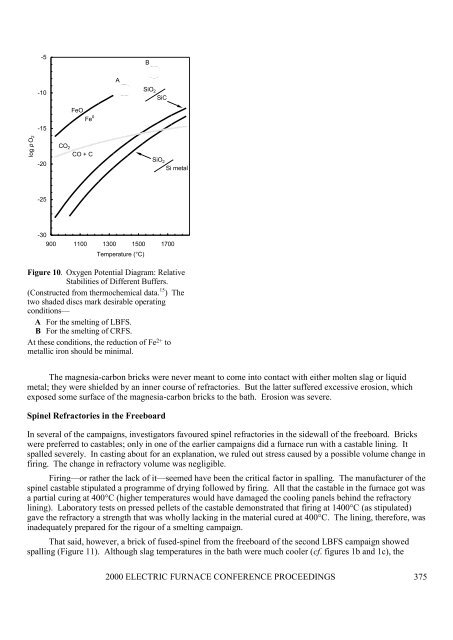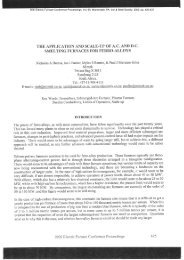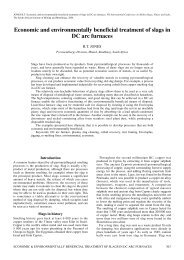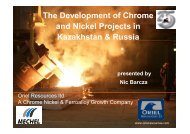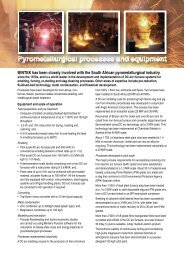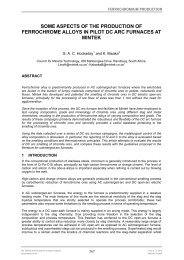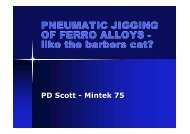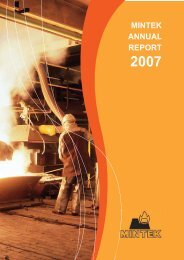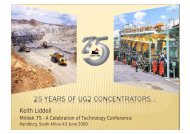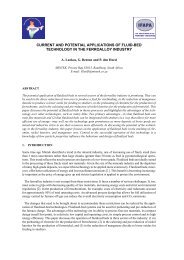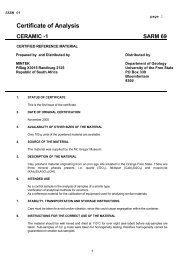Furnace refractory erosion - Mintek
Furnace refractory erosion - Mintek
Furnace refractory erosion - Mintek
You also want an ePaper? Increase the reach of your titles
YUMPU automatically turns print PDFs into web optimized ePapers that Google loves.
-5BA-10SiO 2SiC-15FeOFe 0log p O 2CO 2CO + C-20SiO 2Si metal-25-30900 1100 1300 1500 1700Temperature (°C)Figure 10. Oxygen Potential Diagram: RelativeStabilities of Different Buffers.(Constructed from thermochemical data. 15 ) Thetwo shaded discs mark desirable operatingconditions—A For the smelting of LBFS.B For the smelting of CRFS.At these conditions, the reduction of Fe 2+ tometallic iron should be minimal.The magnesia-carbon bricks were never meant to come into contact with either molten slag or liquidmetal; they were shielded by an inner course of refractories. But the latter suffered excessive <strong>erosion</strong>, whichexposed some surface of the magnesia-carbon bricks to the bath. Erosion was severe.Spinel Refractories in the FreeboardIn several of the campaigns, investigators favoured spinel refractories in the sidewall of the freeboard. Brickswere preferred to castables; only in one of the earlier campaigns did a furnace run with a castable lining. Itspalled severely. In casting about for an explanation, we ruled out stress caused by a possible volume change infiring. The change in <strong>refractory</strong> volume was negligible.Firing—or rather the lack of it—seemed have been the critical factor in spalling. The manufacturer of thespinel castable stipulated a programme of drying followed by firing. All that the castable in the furnace got wasa partial curing at 400°C (higher temperatures would have damaged the cooling panels behind the <strong>refractory</strong>lining). Laboratory tests on pressed pellets of the castable demonstrated that firing at 1400°C (as stipulated)gave the <strong>refractory</strong> a strength that was wholly lacking in the material cured at 400°C. The lining, therefore, wasinadequately prepared for the rigour of a smelting campaign.That said, however, a brick of fused-spinel from the freeboard of the second LBFS campaign showedspalling (Figure 11). Although slag temperatures in the bath were much cooler (cf. figures 1b and 1c), the2000 ELECTRIC FURNACE CONFERENCE PROCEEDINGS 375


